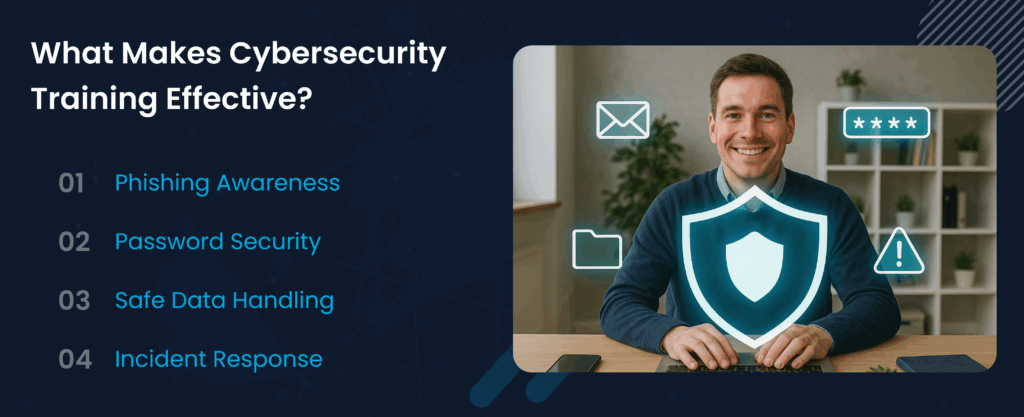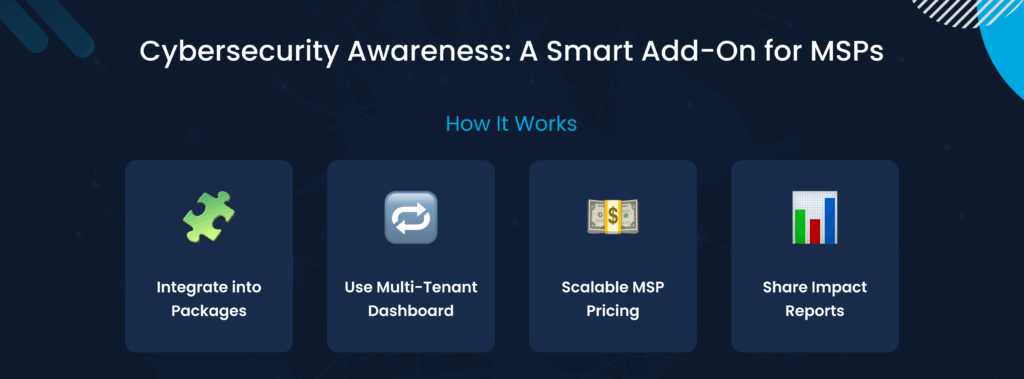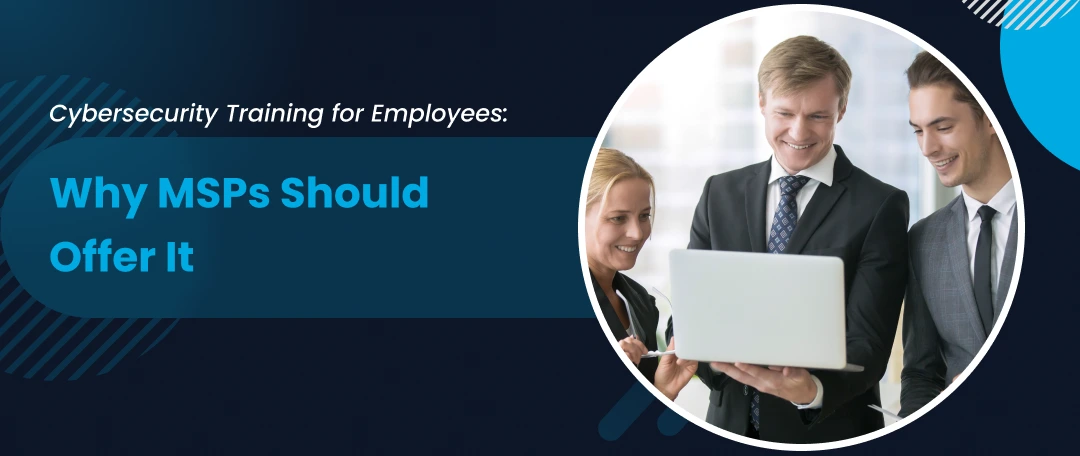Cybersecurity employee training is no longer something companies can skip—it’s essential for protecting businesses. Human mistakes like clicking phishing links or using weak passwords are a leading cause of security breaches. For Managed Service Providers (MSPs), this situation presents both a challenge and an opportunity: untrained employees leave client networks vulnerable, but effective employee cybersecurity training can dramatically reduce those risks. MSPs can protect their clients and differentiate their business by offering cybersecurity awareness training for employees as a service. This guide explains why cybersecurity training for staff matters, what a strong training program includes, how it compares to free alternatives, and how MSPs can successfully bundle solutions like ClipTraining into their services.
Why Cybersecurity Awareness Training for Employees Matters
Employees are the first line of defense against cyber threats. If they aren’t properly trained, they can become the weakest link. Skipping cybersecurity staff training puts organizations at risk of incidents that could have been avoided. Here are some of the key risks of not training employees in security best practices:
- Phishing and Social Engineering Breaches: Phishing emails and fraudulent messages prey on untrained users. Without awareness, a single click on a malicious link or attachment can unleash malware or ransomware across a company. Given that the majority of attacks begin with phishing , not educating users is inviting trouble.
- Poor Password Hygiene: Many breaches occur because employees use easily guessable passwords or reuse the same password everywhere. Nearly two-thirds of employees admit to sharing passwords (for example, texting a co-worker a login credential), and about half reuse passwords across multiple accounts . These habits make it simple for attackers to compromise accounts. Cybersecurity training and awareness initiatives teach staff to use strong, unique passwords (or passphrases) and secure methods like multifactor authentication.
- Unsafe Data Handling: Untrained employees mishandle sensitive data by sending confidential files over personal email, losing unencrypted USB drives, or improperly disposing of documents.. Any mishap can lead to data leaks or compliance violations. Many industry regulations and data protection laws now mandate security awareness and training for staff.
- Delayed Incident Response: How an employee reacts in the first moments of a security incident can make a huge difference. If staff don’t know what to do (for example, an employee might ignore signs of a malware infection or fail to report a lost company laptop), a small issue can escalate into a major incident. Training ensures employees know the proper steps to take – such as immediately reporting suspicious activity to IT – so that incidents are contained faster.
What Is the Best Cybersecurity Awareness Training for Employees?

It’s one that is comprehensive, engaging, and continuous. A strong cybersecurity staff training program should include several core components and topics:
- Phishing Awareness: Training must cover how to recognize and avoid phishing emails, bogus links, and social engineering scams. Effective programs often use real-world examples or even phishing simulations to let employees practice in a safe environment.
- Password Security: Weak or reused passwords are a common weakness. Training should teach employees how to create strong, unique passwords and why they shouldn’t share credentials. Using a password manager and enabling multi-factor authentication are best practices employees should learn.
- Safe Data Handling: Employees deal with sensitive data daily – from customer information to proprietary business data. A good program trains staff on proper data handling procedures: for instance, how to encrypt files or use secure file-sharing tools instead of personal email, how to identify sensitive information (PII, financial data, etc.), and policies like clean desk and screen locking.
- Incident Response and Reporting: Every employee should know the basics of what to do if they suspect a security issue. Training programs must actively guide non-IT staff on incident response steps. If an employee suspects they’ve fallen for a phishing email, they should report it immediately without hesitation or embarrassment. Or if a computer is behaving oddly (possible malware), disconnect from the network and call IT.
Beyond these topics, the best cybersecurity training for employees uses engaging methods to ensure the lessons stick. This means employing a mix of formats – videos, interactive quizzes, and relatable stories – rather than dry lectures. This variety keeps users interested and caters to different learning styles.
Is Free Employee Training Enough for Real Security?
Free cybersecurity awareness training for employees often has the following limitations:
- Limited Scope: Free trainings typically cover basic topics in a general way. They might talk about phishing or passwords in abstract, but they won’t be tailored to each organization’s specific threats or policies. Important details can get missed.
- One-Time Events: Most free awareness trainings are one-time modules or annual presentations. There is usually no follow-up. This is a problem because, as mentioned earlier, effective security awareness isn’t a checkbox – it requires repetition and updates. Employees might pay attention during a single session and then slip back into old habits a few weeks later. Without continuous reinforcement , the training impact dwindles. Threats also evolve rapidly; what employees learned last year may not cover the latest scams today.
- No Interaction or Assessment: Free resources are often passive (like watching a video or reading a PDF). They might not include interactive elements such as quizzes, simulated phishing emails, or practice exercises. This means employees don’t get to apply what they learned, and there’s no easy way to gauge if the training actually sank in. There’s also no testing to certify understanding.
- Lack of Tracking and Accountability: Perhaps one of the biggest shortcomings: free training tools typically don’t offer management any visibility into who has completed training or how they performed. From an MSP or employer perspective, this is critical information. You need to know if that new hire finished their security modules or if certain departments are lagging behind. Paid platforms like ClipTraining include tracking and reporting dashboards , so you can monitor compliance and even show audit logs for regulations. Free solutions leave you blind on this front.
Truly effective training requires consistent effort and expertise – which is exactly what dedicated solutions provide.
Comparing ClipTraining’s Program to Free Offerings:
ClipTraining overcomes the limitations of free resources by providing a structured cybersecurity training program that stays up-to-date with emerging threats. Instead of passively presenting information, it actively engages employees through awareness training and phishing simulations. Employees learn to recognize phishing attempts and regularly test their skills with simulated phishing emails, making training an ongoing, hands-on exercise The platform automatically adapts to each user’s level – for instance, if an employee is doing well, it might challenge them with subtler phishing tests, and if another employee struggles, it provides additional training. This kind of adaptive, hands-on approach simply isn’t available in static free materials.
Moreover, ClipTraining provides the administrative features that free tools lack. MSPs or IT managers can easily enroll users, assign training modules, and track completion rates and scores.The platform actively tracks each client’s security awareness progress and generates monthly reports. These reports are emailed directly to stakeholders, demonstrating the program’s value and ensuring compliance by documenting employee training.. In contrast, if you just send out a link to a free YouTube security video, you have no evidence who watched it or understood it.
Finally, a professional training service like ClipTraining delivers higher engagement. The mix of media (videos, games, quizzes) and the fresh content releases (new courses, monthly micro-trainings) keep employees interested.
Cybersecurity Awareness and Training as an MSP

For MSPs, offering cybersecurity training for employees isn’t just about improving security – it’s also a smart business move. By bundling employee cybersecurity awareness training into your services, you create a new value stream and deepen your role in each client’s operations.
How MSPs can resell or bundle a service like ClipTraining
- Integrate Training into Service Packages: The easiest approach is to include cybersecurity staff training as part of your managed service plans or as an add-on security bundle. This way, training becomes a standard component of your offering. Clients will appreciate that you’re covering the human element of security, not just the technology.
- Leverage a Multi-Tenant Platform: ClipTraining’s platform is built for MSPs, meaning you can manage training for all your clients from a single dashboard. It’s a turnkey setup – you can get a new client’s training portal up and running in about 15 minutes. This makes the training service feel like a natural extension of your company.
- Use Simplified, Scalable Pricing: When reselling, pricing needs to be straightforward. ClipTraining offers MSP-friendly pricing based on the number of clients rather than per-user fees. That gives you flexibility in how you package and price the training.
- Demonstrate Value with Metrics: One great advantage of a training platform is the reporting. As an MSP, you can regularly provide your clients with reports showing training completion rates, phishing test results, and improvements over time. This positions you as a proactive partner in their security. These tangible metrics prove the ROI of the training program.
- Differentiate Your MSP Business: Not all MSPs offer user training – adding this service immediately sets you apart from competitors. You’re moving from just “managing” systems to enabling clients’ employees to be more secure. As ClipTraining puts it, offering employee training is an “innovative service” that embeds your MSP into your client’s daily operations and clearly differentiates you from the competition.
Data breaches pose significant risks to businesses, making cybersecurity training essential. This research on global data breaches explores incident patterns and regulatory responses, highlighting the importance of proactive security measures.
Conclusion
Cyber threats aren’t slowing down, and technology alone can’t stop every breach. Employees need to be prepared as the last line of defense. Forward-thinking MSPs are seizing this moment by providing comprehensive cybersecurity training for employees as part of their offerings.
Don’t wait for the next phishing attack to wreak havoc – reach out to ClipTraining to schedule a demo today Let your MSP be the one that turns employees from a security risk into a security asset. Contact ClipTraining now to get started on elevating your clients’ cyber defenses with proven employee training.


